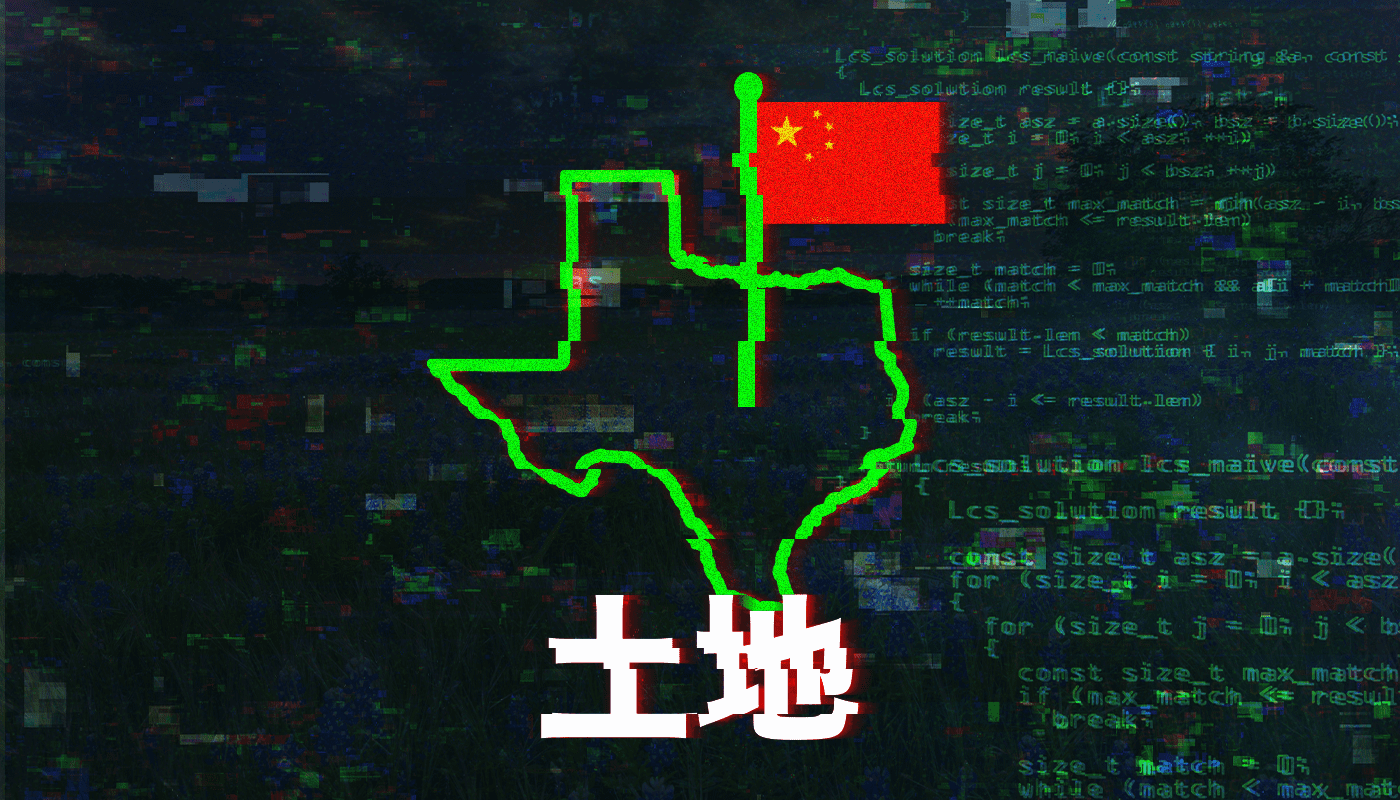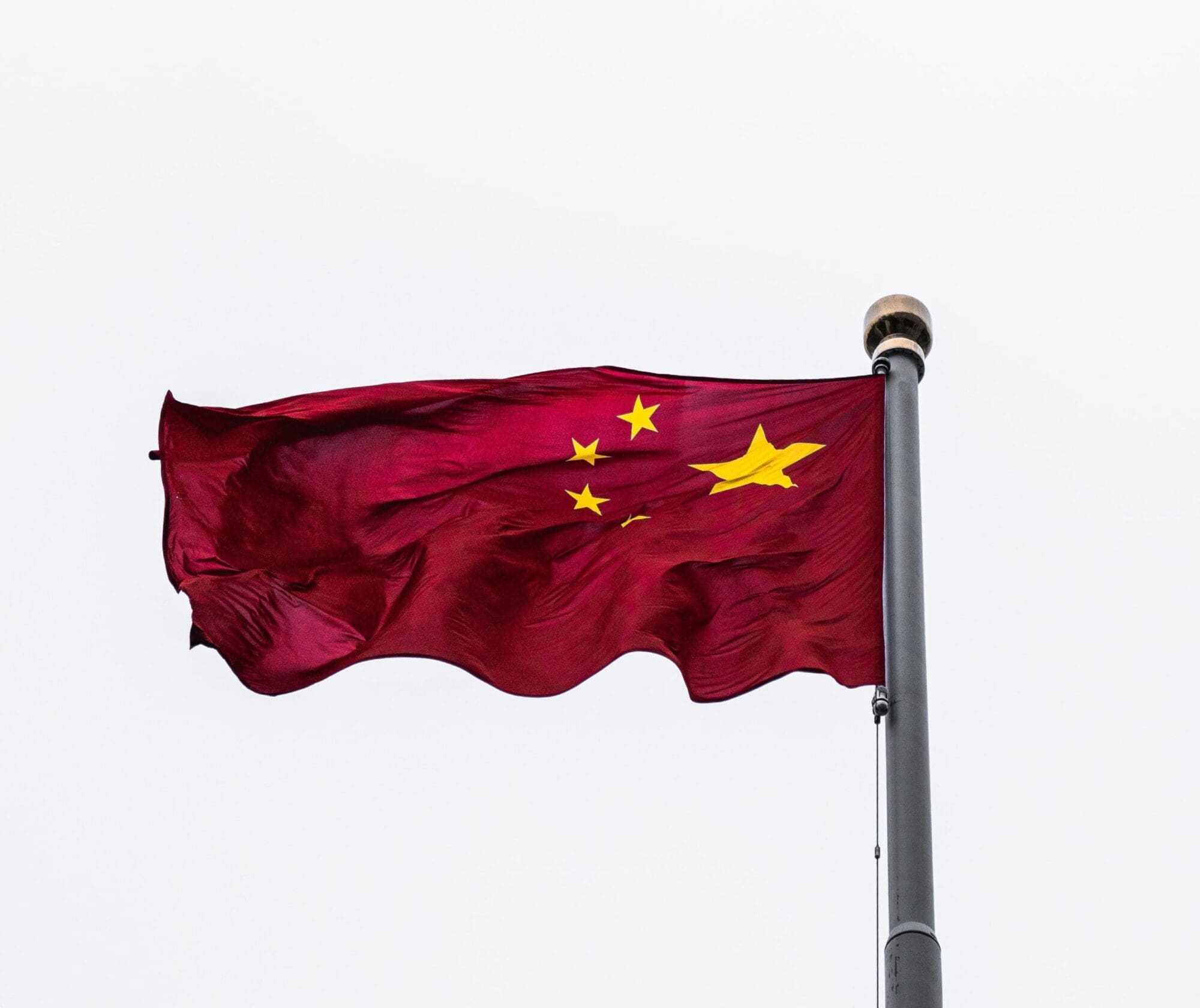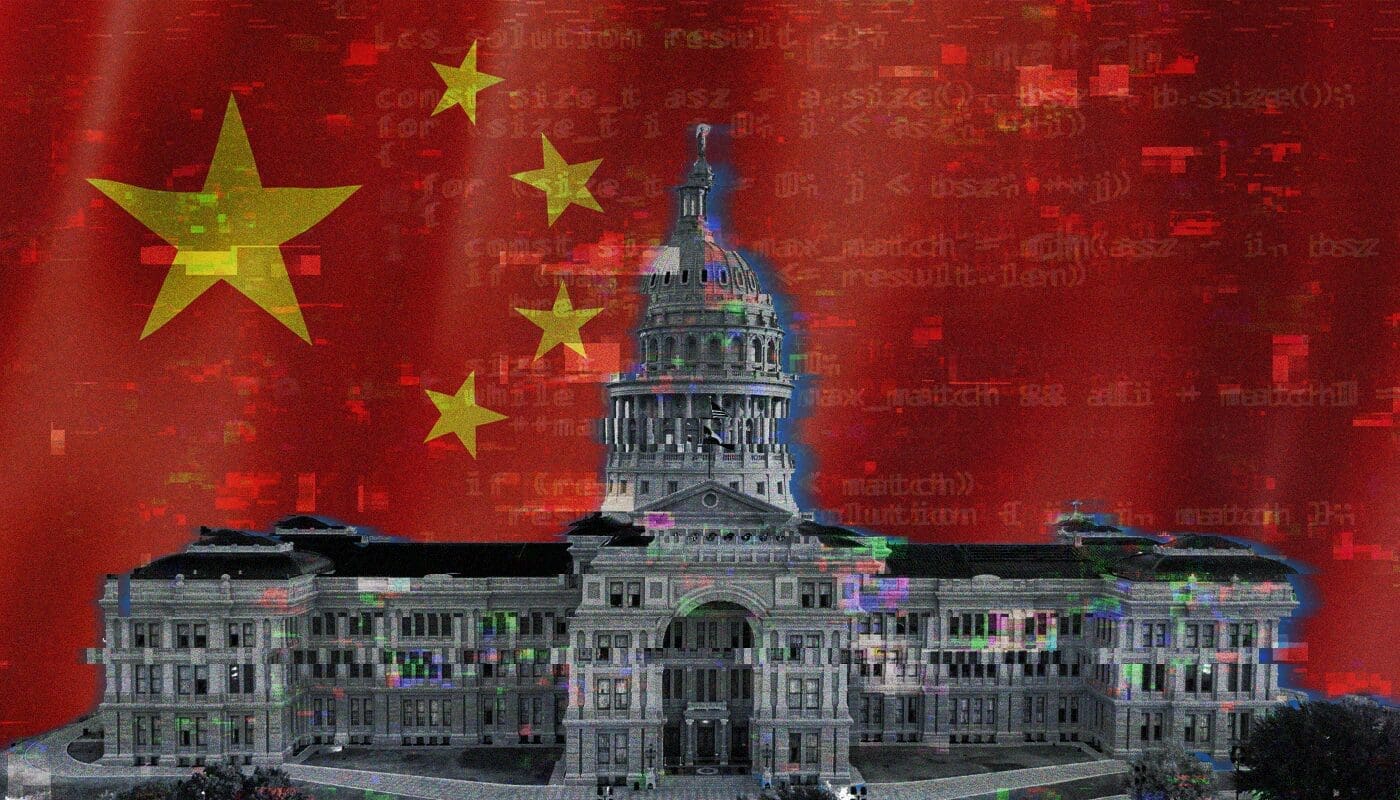Many Americans assume incorrectly that American soil is reserved for our citizens and businesses.
The sobering fact, however, is that foreign nationals—both individuals and corporations—own a lot of land in America.
Particularly troubling are incursions by the Chinese Communist Party (CCP) absorbing Texas soil for its strategic geopolitical ends.
Texas Scorecard recently launched a four-part investigative series exposing CCP infiltration of our state’s education apparatus. During our months-long investigation on the CCP’s activities, it became clear that education was merely one part of a multi-prong incursion into the United States of America.
The second prong we will explore here is their infiltration of our agricultural land.
There are some who wave a hand at concerns about foreign entities and individuals owning land stateside, dismissing them as conspiratorial or xenophobic. However, a review of adversarial countries’ actions suggests land holdings are strategic and could undermine national and resource security.
Furthermore, concern over CCP ownership of U.S. land isn’t a partisan issue. During our investigation, we found multiple instances of Republicans and Democrats making public statements, authoring legislation, and warning of the national security implications of such ownership of U.S.-based assets.
Background
Dating back to 1981, immediately following the initial survey of foreign ownership of land in the U.S., Texas was identified as one of the top 10 states most affected by foreign ownership. Decades later, this remains to be the case.
For the past decade, the number of purchases of agricultural resources by foreign actors has dramatically increased across the nation, with Texas being No. 1 according to a review of USDA documents. Currently, at least 4.7 million acres of Texas’ agricultural land is owned by a foreign entity or individual.
What is even more troubling is the intended uses of the land and the actors involved in development.
In theory, the U.S. federal government should be keeping track of foreign agricultural land ownership. But time and again, it’s not until the last moment that disclosures are made and concerns are publicly raised. Texas Scorecard’s research on these holdings shows that on more than one occasion, foreign acquisitions that should have been stopped immediately were allowed to progress and only ultimately stymied with great effort.
Keep in mind, these accommodations are juxtaposed by strict rules against U.S. citizens or entities owning land in adversarial countries.
In addition to that, there’s a shocking gap in what we know about not just the CCP, but any foreign land ownership in the nation.
Limited Protection
Passed by Congress in 1978, the Agricultural Foreign Investment Disclosure Act (AFIDA) requires foreign entities to disclose interests in agricultural land to the U.S. Dept. of Agriculture (USDA). This is triggered when certain thresholds under the law are met.
Even a smaller farm might need to be reported under AFIDA, as anything larger than 10 acres or producing annual gross receipts of $1,000 or more applies.
While the penalty for failure to report (or reporting false information) under AFIDA is costly and can end in fines of up to 25 percent of the fair market value of the land, enforcement is a rarity. The last fine was issued nearly a decade ago in 2014.
The USDA also has the authority to reduce the penalty and can take into account factors like the amount of time the violation persisted, how the violation was discovered, “extenuating circumstances,” and the nature of unreported or misstated information.
Additionally, the agency does not check for completeness or accuracy. While the USDA has been given the power to collect and report on foreign land holdings, rules governing ownership vary from state to state.
There’s also the problem of under-reporting.
For instance, take China’s land holdings overall. 2020 figures from the USDA put total foreign-owned agricultural land holdings for China at 352,140 acres, up from 191,652 acres in the prior years report. Because of high-profile purchases starting in 2015, a single company owned up to 140,000 acres in South Texas alone.
Instead of comprehensive reporting from the USDA or state agricultural departments, Americans are left with what amounts to—at best—a (self-reported) guess and a steady stream of stories about foreign entanglements that spring up from time to time.
Also, it’s a poorly guarded secret that foreign land ownership is hidden.
One way some foreign farmland owners circumvent disclosure or state-level laws barring foreign ownership of farmland is shifting property into majority U.S.-owned subsidiaries—not to mention that land holdings by foreign owners are often a moving target. For instance, a particular parcel’s inclusion as foreign-owned land can fluctuate annually if it’s owned by a publicly traded corporation. The threshold of stock ownership is relatively low at 10 percent.
This is the national component of foreign land ownership and the limits of what we can know at that level.
When it comes to Texas, the state does not prohibit the ownership of agricultural land by foreign individuals or entities. There are multiple states that have total bans, while others at least have limits.
While this complacency has been the status quo for the better part of the past two decades, lawmakers appear to be more proactive about keeping tabs on foreign actors.
Global supply chain disruptions in 2020 due to the Chinese coronavirus, followed quickly by the war in Ukraine and growing tensions between the U.S. and China over Taiwan, have lawmakers critically examining foreign infiltrations at home.
Foreign Land Holdings on the Rise
A recently concluded comment period on AFIDA disclosed that foreign interest required to make disclosures increased by 2,250, as more foreign persons acquired or transferred an interest in U.S. agricultural land than in prior years and must comply with AFIDA reporting requirements.
According to the latest AFIDA annual report, foreign holdings of U.S. agricultural land increased modestly from 2009 through 2015, increasing by an average of 0.8 million per year. Since 2015, foreign holdings have increased by an average of nearly 2.2 million acres, ranging from 0.8 million acres to 3.3 million acres per year.
Of this increase, most of the purchases are of forest, crop, and pasture lands. Changes in crop and pasture land are “due to foreign-owned wind companies signing, as well as terminating, long-term leases on a large number of acres.”
Indeed, the largest wind farm in the state of Texas, the Roscoe Wind Farm outside of Abilene, is owned by RWE, a German multinational corporation. The project spans multiple counties and sits atop leased farmland.
China Owning American Land
While the American public’s attention has been seemingly fixated on Russia since 2016, the CCP’s activities in the U.S. are just as troubling, if not more. Their ruthless oppression of Chinese citizens, hostile stance towards America, and methodical plan for domination all touch the issue of agricultural land ownership in the U.S. and Texas.
The latest available data from the USDA reported China holding just 352,140 acres of agricultural land, which is slightly less than 1 percent of foreign-held acres. But, as is the case with foreign funds flowing to higher education, the tracking of these transactions is imperfect.
It’s likely that China’s ownership of land in the U.S. is understated in USDA’s annual reports.
Blue Hill Fiasco
Beginning in 2015, Sun Guangxin, a Chinese billionaire, began acquiring land to develop a wind turbine farm in South Texas. Eventually, Guangxin snatched up around 140,000 acres in Val Verde, roughly 7 percent of all land in the county.
In 2019, five years after acquisitions began, the proposed development of a wind farm on the land led to an uproar in Texas and at the national level.
A member of the People’s Liberation Army, Guangxin reportedly built his fortune by establishing close ties to Communist party officials, and leveraged these connections to cheaply acquire and redevelop government property to become a real estate tycoon.
Wang Lequan, who was re-elected as secretary of the Xinjiang Party Committee of the Communist Party of China for three consecutive terms since 1995, is the backer behind Guangxin; the forces behind Wang Lequan are Zhou Yongkang and former President of China Jiang Zemin. Supported by Wang Lequan, Sun Guangxin, chairman of the board of directors of Guanghui Group, is one of the few private oil field owners in China.
His base of operations in China deserves special attention too.
The Xinjiang province is where the widely reported oppression of the Uyghur population is taking place. In part, the Uyghur population is used as forced labor. According to Irina Bukharin, two of the goods produced in this region, in disproportionately high figures, include polysilicon (used in solar panels) and wind turbines.
Sun’s plans for the wind farm in South Texas were covered by state and national media outlets. A billionaire, Guangxin is the chairman of Xinjiang Guanghui Industry Investment, which is the parent company of GH America, the company spearheading the wind farm project.
But there’s more to this story.
“The acquisition by General Sun out near Del Rio was done by them forming a Delaware Corp called GH America,” J. Kyle Bass, chief investment officer of Hayman Capital and founding member of the Committee on the Present Danger: China, told Texas Scorecard. “They funded the Delaware Corp with dollars from a CCP-owned institution in America. You basically had a U.S. corporation, funded with U.S. dollars, buying U.S. property. It was really difficult to understand who the actual owner was and what kind of sovereignty was represented there.”
GH America also positioned itself to influence the legislative process. According to Texas Ethics Commission records, Stephen Lindsey is registered to lobby for the company. He’s widely reported as the vice president of government and regulatory affairs for GH America. According to Transparency USA, from January to September 2021, during the regular and special state legislative sessions that year, Lindsey’s contract was anywhere from $93,150 to more than $186,000.
There’s also a national security risk. Sun’s planned wind farm at Blue Hill was not far (70 miles) from Laughlin Air Force Base. This proximity alarmed many. There are also liquified natural gas deposits in the area.
Bass says the CCP’s aim here is surveillance.
“Basically, they call it ‘over the horizon’ mapping. If you get the point higher and higher, you can map more and more, i.e. you can increase the linear distance that you can map,” he explained. “With their new ability … they can map things within one inch of specificity and clarity of things that are 50 miles away from 700 feet. What’s interesting about that is Laughlin Air Force Base is 30 miles away, and the restricted airspace is 10 miles away from the main ranch.”
Texas Agriculture Commissioner Sid Miller told Texas Scorecard the CCP bought farm land near another Air Force base in North Dakota. “We don’t need to give them listening capabilities to our aircraft coming in out of those [military installations] and other communications coming out,” he said. “It’s crazy enough just to allow our biggest enemy to be purchasing our own soil.”
Bass discussed how the South Texas purchase was allowed to take place. “Steve Mnuchin at [U.S.] Treasury gave a quick Friday-night special OFAC [Office of Foreign Assets] approval without [U.S. Dept. of Defense] being in the room, which is pretty crazy,” he said. “If Treasury is the nexus of [the Committee on Foreign Investment in the United States], and all of the other departments chime in when they can, there should not be an ability for a unilateral approval or approval by the U.S. Treasury secretary, who might be corrupted by the Chinese government.”
When asked, Bass said we don’t know how much land the CCP or its connected entities have in Texas. He explained the Lone Star Infrastructure Protection Act (Texas Senate Bill 2116 passed in 2021), “encouraged” the U.S. Dept. of Defense to assign task forces to examine CCP land holdings near DOD installations. “I know they found some more in Texas, but I don’t know how much more.”
Sen. Ted Cruz (R–TX) was a vocal opponent of the Blue Hills wind farm development, issuing a letter in 2020 to then-Treasury Secretary Mnuchin seeking a private briefing on the project. The junior senator from Texas also proposed legislation that would trigger the review of wind projects within a certain distance of a military installation.
This isn’t the first time a Chinese company has tried to install a wind farm near a U.S. military installation.
Liang Wengen
In 2012, Ralls, an American company owned by two Chinese nationals, purchased multiple American-owned wind farm companies with several project sites. Four of these sites were within restricted U.S. Navy airspace in the Pacific Northwest.
This part of the purchase raised national security concerns, and Ralls was told to divest and destroy the cement pads they’d poured for construction of its mills near the base. The company sued the government and, troublingly, was successful at first.
Eventually, the company was defeated in its efforts and had to divest. The fact that this episode did not dissuade future attempts speaks to the persistence of the CCP to take part in the production of energy stateside.
There is also a connection between Ralls and Texas. The blades spinning at many wind farm sites in Texas are produced by SANY, the parent company of Ralls, which is owned by the richest man in mainland China, Liang Wengen.
According to a Forbes profile, Wengen worked as a top manager at a state arms plant before getting into heavy construction equipment. He joined the ruling elite in 2011, becoming a member of the CCP.
Conclusion
America and Texas are in an enviable position; both can be self-sufficient in energy and agricultural production. This ability is undermined by adversarial countries being in control of substantial assets in both categories.
According to the 2021 Office of National Intelligence Threat Assessment, Beijing is projected to continue to “promote the Belt and Road Initiative (BRI) to expand China’s economic, political, and military presence abroad.”
BRI is an infrastructure plan adopted by the CCP government almost a decade ago. Global in nature, the initiative calls for investment in nearly 70 countries and international organizations. The CCP owning agricultural land, food processing, and energy installations directly or indirectly Is correctly viewed as part of BRI, as well as the government’s plan for food security.
While CCP land holdings in the U.S., and other countries, do not appear to be large when compared to the total landmass of the country, they are strategically leveraged based on the amount of energy expended to keep and develop these assets.
Those dismissing concerns about China setting up shop, and holding modest but substantial swaths of farmland in the U.S., appear to be ignorant of the public statements of CCP officials and the broader plan of the communist country to embed itself into all areas of public life in countries that oppose its government.
“My proposal would be we’ll be reciprocal. If we can’t buy land in your country, you can’t buy it here. That’d pretty much solve it,” Commissioner Miller said.
In Part 2, we’ll examine the CCP threat to our food security.
No ads. No paywalls. No government grants. No corporate masters.
Just real news for real Texans.
Support Texas Scorecard to keep it that way!







